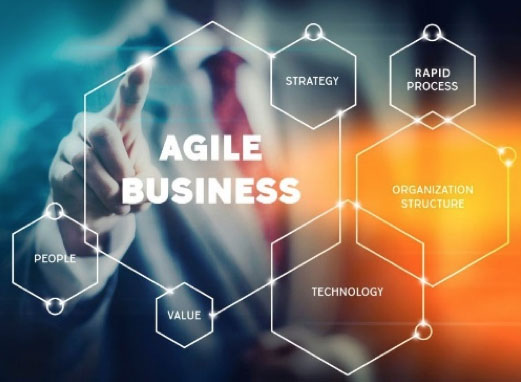Why Engage HR in Organizational Change Management?
Well before COVID-19, McKinsey reported in 2015 that, despite abundant investments in Organizational Change Management [“OCM”], these investments have not been reflected in organizational ROI. In fact, they cited a 70% failure rate to achieve OCM goals.
Most notably, this poor outcome has been due to a lack of behavioral change integration. Brent Gleeson, Forbes Magazine’s Leadership Development Contributor shared, “the most common causes of change management failure are a weak culture that isn’t aligned with the mission, lack of participation and buy-in, under-communicating a powerful vision, over-communicating a poor vision, not enough training or resources, and so on. But one very critical roadblock standing in the way of bringing a change vision to fruition is what I call change battle fatigue.”
It is HR’s responsibility to develop and implement the culture defined by leadership throughout an organization’s people systems, including development. In fact, David Ulrich’s1 2016 global research of 1,395 IBUs with 31,868 participants (organization investors, owners, leaders and HR) revealed that the two most impactful competencies for HR are those of Strategic Positioner followed by that of Culture and Change Champion.
When you’ve contemplated or implemented changes in structure, process, practices, policies, software, supply chain, customer products/services or mix, or a merger, acquisition or divestiture to what degree have you engaged HR leadership in the effort? What were your outcomes when HR was not actively leading efforts on engagement, reducing resistance and development? What were the results when it was?
For decades, Bob Fricchione, one of our HR Practice Leaders, has led change, continuous improvement and quality efforts from HR leadership roles in domestic and global organizations. Consistently and reliably, he has utilized a simple formula to gauge the potential for successful change – whether it’s a smaller or massive and complex change management initiative. With change fatigue and resistance at an all-time high, knowing how to plan assured change management success is a high priority. We share the formula he has used with you, below.

Kathie Dannemiller’s adaptation from the original work of David Gleicher, Arthur D. Little.
Our Current Change Management Landscape
A pre-existing baseline of change fatigue, now topped by COVID stress and fatigue, creates substantial challenges to organizations contemplating a change management initiative. Many face increasing pace, frequency, complexity or impact of internal and external change, added to weak stakeholder buy-in and engagement… coupled with the sense that everything has to happen rapidly and at once to address a new reality which no one can quite define yet. Additionally, employees are more likely and increasingly change resistant due to what they feel as overload in work and personal issues as well as fear of what the near term future may mean to them and their family.
The HR profession continues to face needs for fast-paced evolution in the expanse of its accountabilities and OCM leadership is newer to its agenda. Unfortunately, while HR has been increasingly called upon to contribute expertise in an OCM role, in many organizations it continues to lag in essential OCM strength to be able to assure change management success. Research conducted by Tillburg University (Netherlands), “HR Competency Model for Change Management” revealed significant disparity from an assessment by line management of HR competence in change management compared to HR’s self-assessment. Identified in their findings were three key areas of HR shortfall:
- Transition Enablement – identifying and establishing readiness for change and addressing resistance;
- Credibility – disciplined process for managing transition; and
- Aftercare – post-change project follow-up.
All three are critical success factors for today’s OCM needs
 At the same time, demands for effective organizational change management (“OCM”) are increasing. Whether adapting current processes or transforming to a new state, organizations are immersed in figuring out exactly what their organization needs to do and how to implement it as fast as possible to survive or thrive going forward. In this unstable business climate, it’s even more of a challenge. The successful post-COVID change management project has to:
At the same time, demands for effective organizational change management (“OCM”) are increasing. Whether adapting current processes or transforming to a new state, organizations are immersed in figuring out exactly what their organization needs to do and how to implement it as fast as possible to survive or thrive going forward. In this unstable business climate, it’s even more of a challenge. The successful post-COVID change management project has to:
- land successfully and lightly on a moving target, so it can be prepared to easily move again as context shifts;
- include adept, critical behavioral change management elements which are sensitive to the readiness and concerns of impacted staff; and
- remain alert for unexpected shifts in the external business, compliance or regulatory environment.
Whichever challenges your change effort faces, the stakes are high. There’s no time for do-overs. Time will be extra tight for any pilot projects and phased-in efforts. The good news though, to execute a change management project and achieve successful organizational change, some things will remain the same.
What Doesn’t Need to Change?
Successful organizational change is achieved over time via a process while being managed as a project. The process and its resulting projects can still be done the same way. Familiar process steps still apply:

While the basic process stays the same, the process needs to be applied more flexibly since there are many unknowns and potential shifts in the internal and external environment that can crop up unexpectedly. For example, lock-down requirements can ease or tighten on short notice, individuals or groups of employees can request different working arrangements, children’s schools may move from hybrid to all remote learning resulting in availability changes for working parents and/or new technology options may surface.
All of this will likely create the need for more mid-course corrections, re-casting of some project steps, re-visiting the timeline to achieve the desired future state and other “in-flight” adjustments. Project staff will more likely need to remain on stand-by after project conclusion to orchestrate and measure efficacy of ongoing shifts and additional revisions. We’ll need to assess sustainability more rigorously and frequently. But, bottom line – the project steps are those we’re accustomed to from past change management efforts. Conducting COVID change management projects will be variations on a familiar theme to change management leaders and professionals. However…
Almost Everything Else Critical, Must Change
Resilience (the organizational capability to thrive in a turbulent business environment such as that which we face now) and OCM require solid capability and teaming in and among three key areas – Leadership, Operations and HR. These three must complement and/or reinforce core change competence to plan, implement and sustain change including:
- Sound planning from each area with integration of actions across all three;
- Willingness and ability to move quickly and decisively to act on key decisions;
- Ability to create and monitor key success measures; and
- Flexibility to recalibrate and move quickly as further change demands.
Critical accountabilities for these three areas include:
1. Leadership: Planning and Strategy – current state assessment that complements corporate strategic planning and risk assessment efforts. Critical factors:
- Get it right the first time;
- Sustain the change while being ready and open for further change; and
- Consistent communications and actions throughout the change process.

2. Operations Leadership: Integration and Operational Change – translate planning and organizational strategy into operational and process adaptation, re-design or wholesale transformation and implement. Critical factors:
- Seamless integration with strategy and planning;
- First-time, flawless execution in partnership with HR;
- Frequent evaluation and readiness for additional shifting.
3. HR: Engagement Support and Behavioral Change – support strategy, planning, and operations changes. Critical factors:
- Quickly and clearly define the “new reality” for employees, programs, policies, and practices;
- Track current employees’ state-of-mind on returning to work and working remotely. Keep current with feelings/ emotions and workforce needs;
- Assess needs for HR systems’ re-design and integration to support shifts in strategy and operations;
- In partnership with leaders, communicate often, effectively and transparently… through diverse media;
- Frequently evaluate HR impact on operations and strategy to assure effective integration and support; and
- Actively maintain partnership with the C-suite on employees’ developing needs and reactions.
While process or technical change may have been centerpieces of change management projects of the past, enabling behavioral change is front and center now.
Where The Human Resource Consortium Can Deliver Rapid, High Value
For over 25 years, The Human Resource Consortium has consulted on Culture and HR development to effect accelerated strategy achievement within Financial Services, Governmental, Healthcare, Manufacturing and NonProfit organizations, with an exceptional track record of success.
Its team of 20 senior practice only experts provides highly customized and integrated solutions across the expanse of organization design, development and human resource management including more critical efforts of today:

- Change Management Advisory, Coaching, Consulting and Training Services
- Emotional Intelligence Assessment & Development
- Executive Coaching
- Facilitated Leadership Planning
- Individual Resilience Assessment & Development
- Organization Resilience Assessment
- Resilience-based Change Management
- Resilience-based Change Management Training for HR
- Structural, Process & Governance Agility
- Succession & Workforce Planning
- Teaming & Collaboration
- Trust Assessment & Development
For additional information, please contact Regan MacBain Traub, Managing Principal
rtraub@thehrc.com, office: 203.495.1500 or mobile: 203.495.1500
1 David Ulrich, Ph.D. is globally recognized as the Father of Modern HR, has published 25 books and over 200 papers. He is Co-Founder and Principal of RBL Group and a Professor, Ross School of Business, University of Michigan. Reference publication: “Victory Through Organization,” McGraw-Hill, 2017.
By Fran Morton, Change Management Practice Leader and Regan MacBain Traub, Founder & Managing Principal







